Written by: Grace Humphrey (Intern and Undergraduate Student)
Hi everyone!
My name is Grace Humphrey and I am an Undergraduate student at the University of South Florida (USF). I also work as an intern at USF College of Marine Science’s Ocean Circulation Lab (OCL). I’m studying marine biology and eventually would like to be an aquatic veterinarian.
Now, at this point, you may be wondering why and how I got on NOAA’s Nancy Foster to do hydrographic sea floor mapping. Well, OCL does a good bit of work on COMIT projects and this opportunity was presented to us interns and students through that connection. I’d have been silly not to accept, so here we are! Aside from getting research experience in a different field, I also wanted to do something so out of my comfort zone and prove to myself that I am capable of such things. And when I say, “out of my comfort zone”, I mean it. This was my first research cruise ever in a topic I knew practically nothing about. I also knew I was going to be the youngest person there. Not that the idea alone is terrifying but being the youngest person (I am not that far along in my bachelor’s degree – only entering my second year in August), I still felt intimidated as the other undergrads were in their last year their degrees and seemed much more confident and experienced. Not to mention the other students were getting their master’s or their PhD. Putting all that aside, I also knew how motion sick I get on land so thinking about what’s going to happen once underway was scary. But I took the leap, and it was so worth it!
When that first day on board came around, I realized I had been worrying for no reason (except for the sea sickness part!!). Everyone on board, the crew and the science party, was so incredibly nice. The rest of the science party made me feel so included and took time to explain anything that I couldn’t quite make sense of. I also realized that even though a lot of the surrounding scientists were very knowledgeable, they also had questions – ones like mine. We were all on this cruise to learn. It was also amazing to be surrounded by wonderful women scientists. I work in a male dominated workplace at the moment, and there’s nothing wrong that I’ve experienced in my particular situation. However, it can be hard sometimes to feel understood or completely noticed by others. On the Nancy Foster not only was I surrounded by great women scientists, but I felt empowered and completely accepted by them.
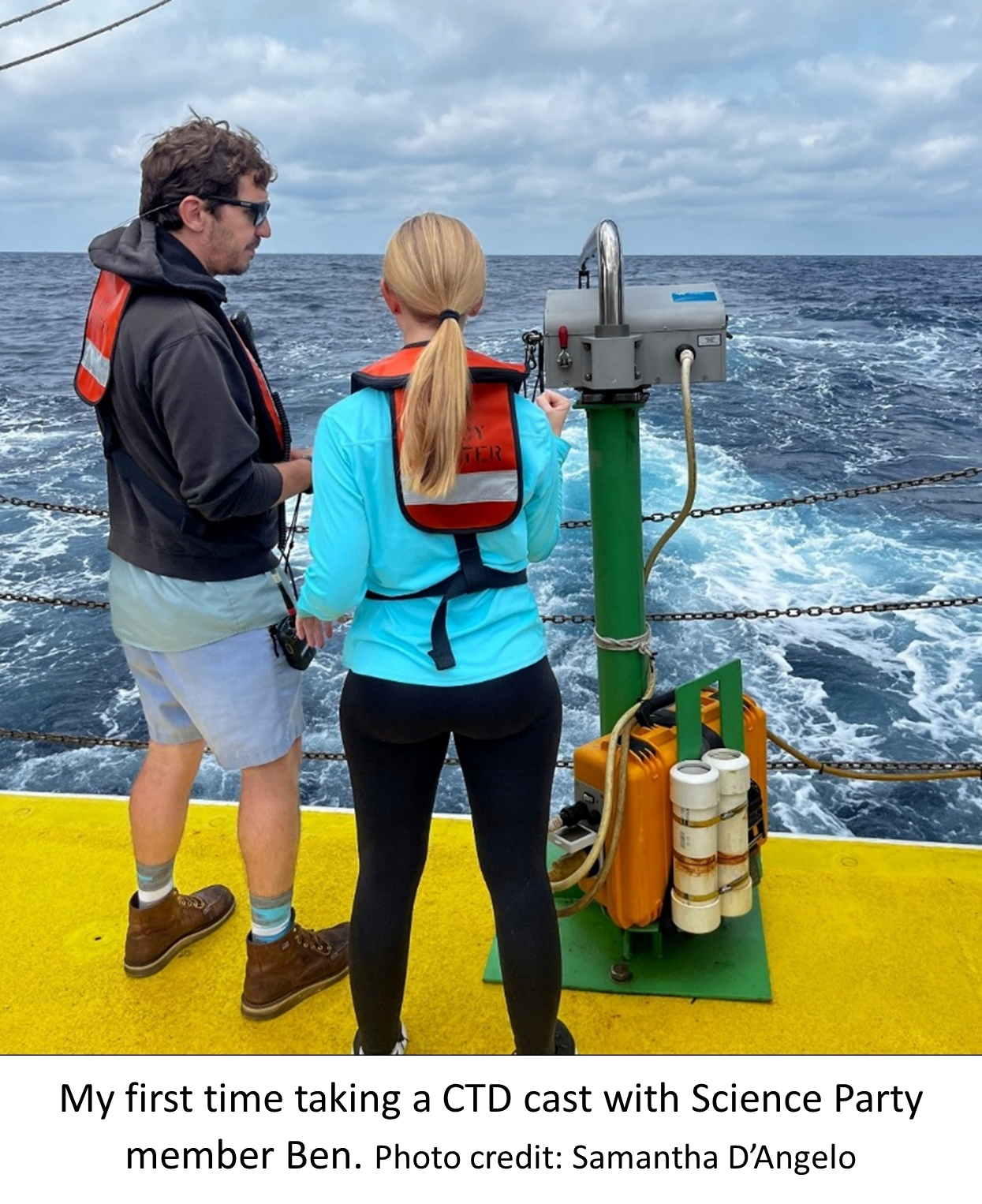
Because I am so new in the science world, it was also so strange to me to be completely involved in everything. For example, being trusted enough to complete a Conductivity, Temperature, Depth (CTD) cast was exhilarating and kind of intense when I had to bring it out of the eddies the boat had trapped it in. I also got to “play” with all the mapping software, CARIS and Qimera, by cleaning all the extra noise from the sea floor and all those pesky fish. While I may not have understood everything going on around me, I will always value the time others took to explain the processes that were going on.
When we weren’t working hard on understanding crazy backscatter and funky 2D models, we were learning new card game tricks and trying to best our peers during intense games of Uno, Tripoley, Queens and Backgammon. How’d that turn out for me? Let’s just say I am not going to be playing any of those games with real stakes and consequences any time soon. We also had a fellow scientist break out some nail polish halfway through the trip which was a big hit. You never know when you’ll need perfect nails in the Atlantic, am I right? We even played a game of trivia with the bridge one night, which I won.
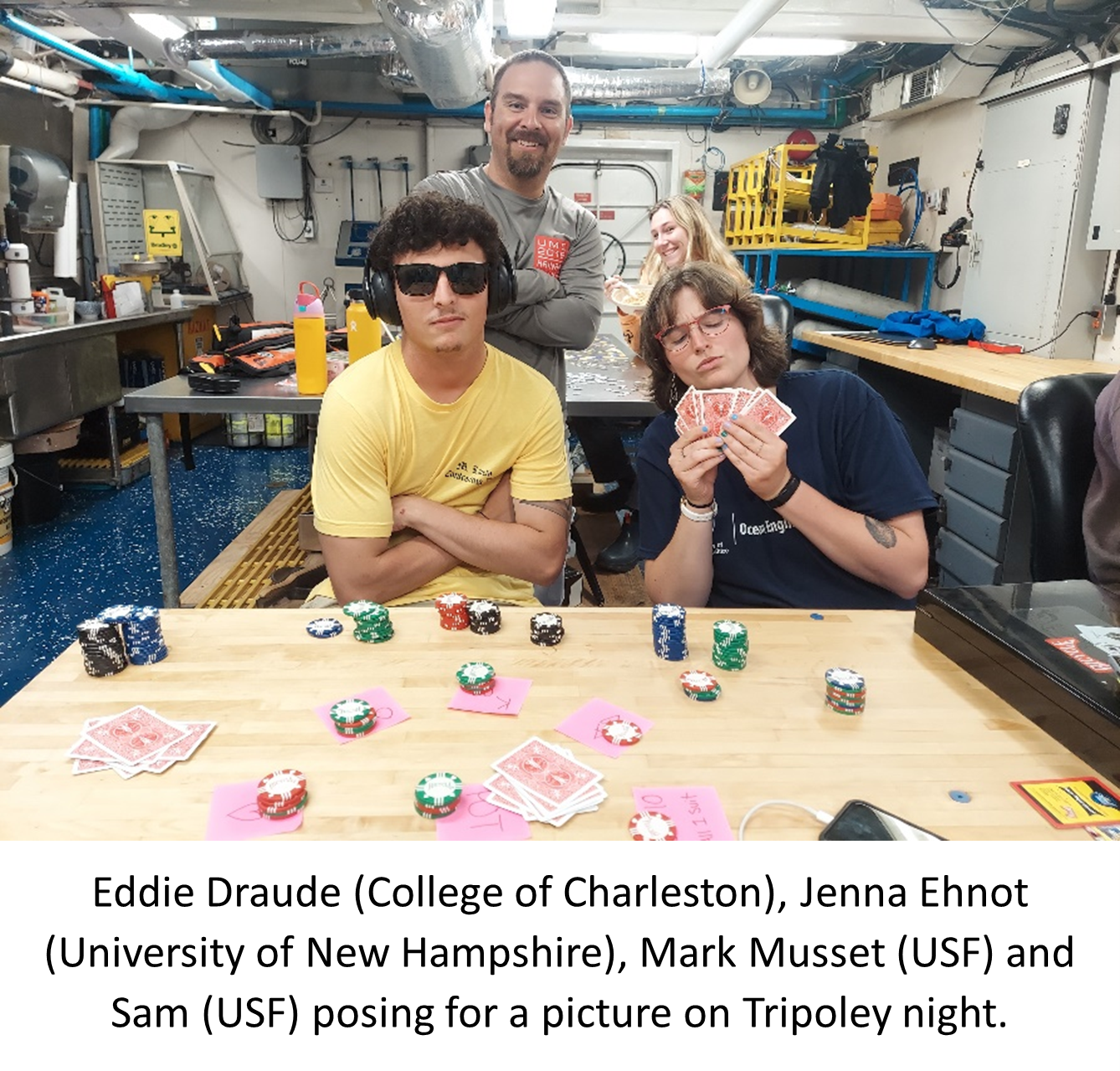
I think my biggest learning curve came with earning my sea legs. Like I mentioned, I get crazy motion sickness on land, so I was deeply dreading the sea sickness I was about to experience. As we got underway the first night, I started feeling the rocking and was glad I had eaten before the ship had started moving. I tried my hardest to focus on the card game of Queens but that didn’t seem to help so I took an early night. Pro tip: Don’t sleep on the top bunk if you are prone to motion sickness. As the night went on, I felt like I was gripping on for dear life on the top bunk as it rocked in that dreaded corkscrew motion. Eventually, I decided to go to the bathroom. Big mistake as that started my episode of getting sick. For the next four hours, I went back and forth from the head to the mess, eating my now favorite snack of saltines and drinking water. I am so grateful for those that checked on me throughout the night and gave me the advice of going down to the lounge which was at the center of the boat and at the lowest point. Once I made it down to the lounge, I set up camp on the couch and promptly fell asleep. I may have scared one of the sea men on his nightly rounds, but I am pretty sure he played a good practical joke on me the next night by moving the practice dummy and some boxes around while I slept. After my first night of awful sea sickness, I am happy to report that I was perfectly fine the rest of the voyage. Not only did that mean no more nausea, but when we went through a huge storm I was able to go up to the bridge and watch how they navigated through it and what they saw while captaining the ship.
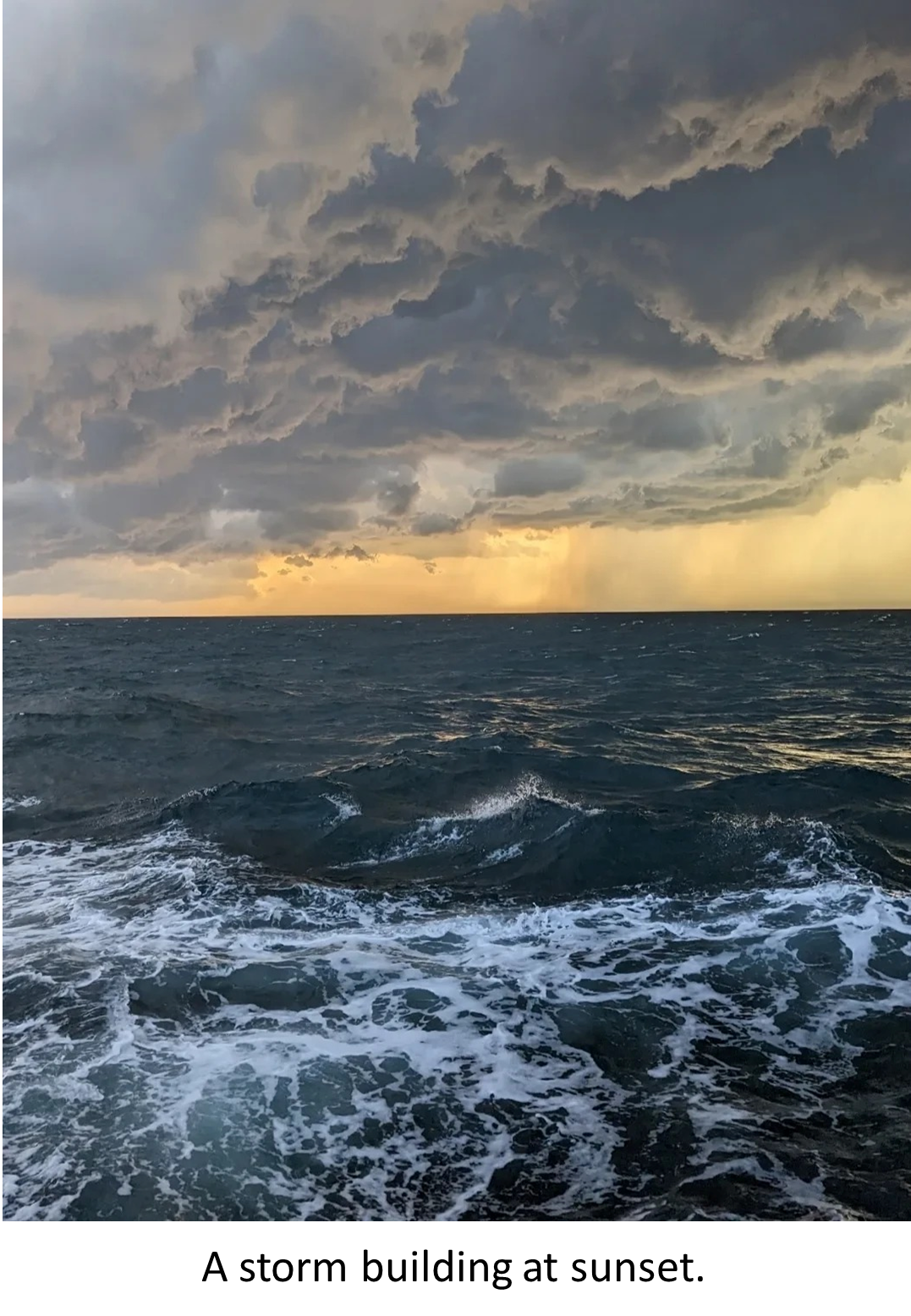
Overall, this was a wonderful experience, and I am so thankful that I was offered this opportunity. I learned so much about hydrography which I never would have learned without this research voyage. While I don’t plan to pursue hydrography as a career (my heart is stuck on marine mammals), I never would have known this was even an option or career field to go into. And the other skills and experiences I gained will absolutely transfer to my future endeavors.
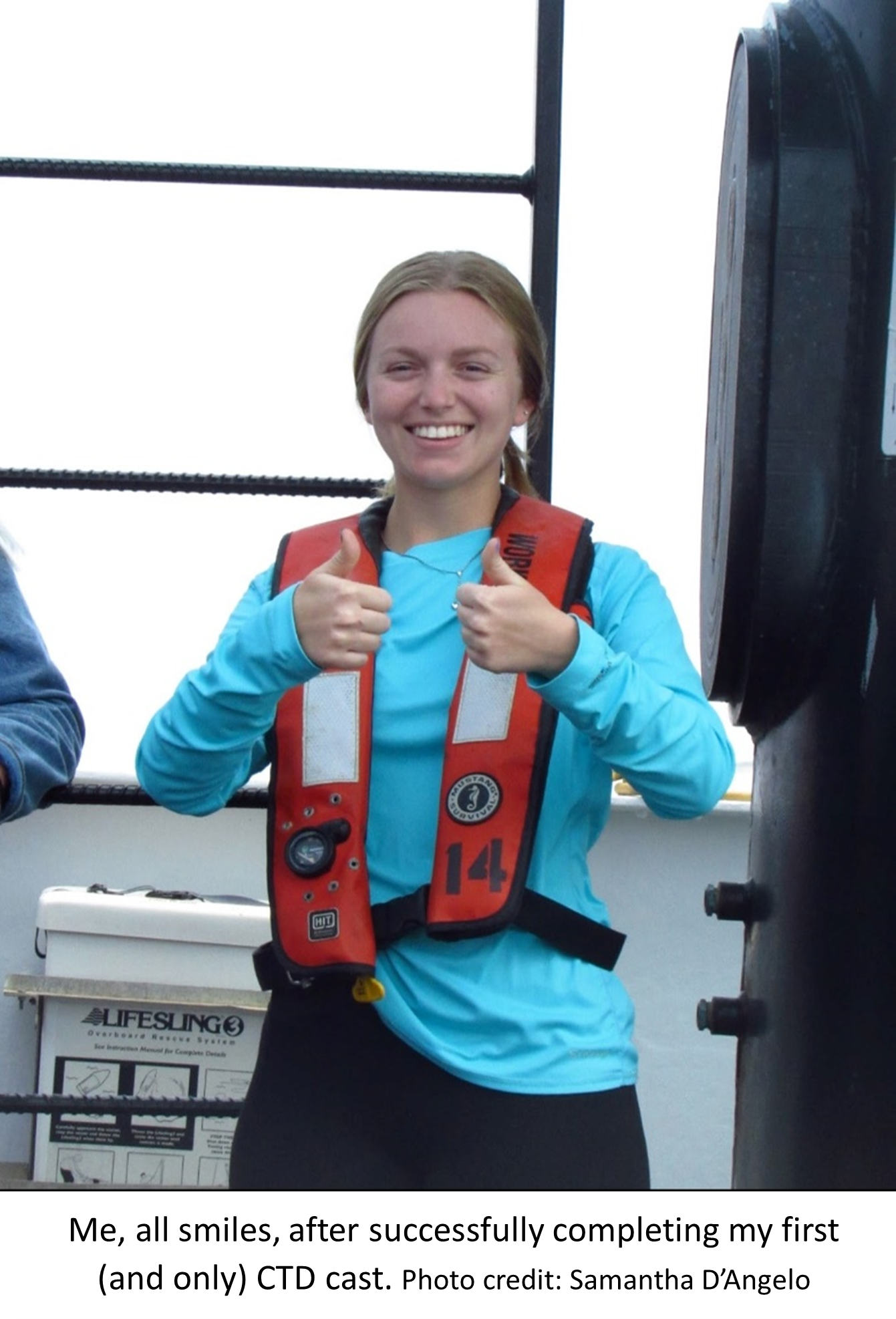
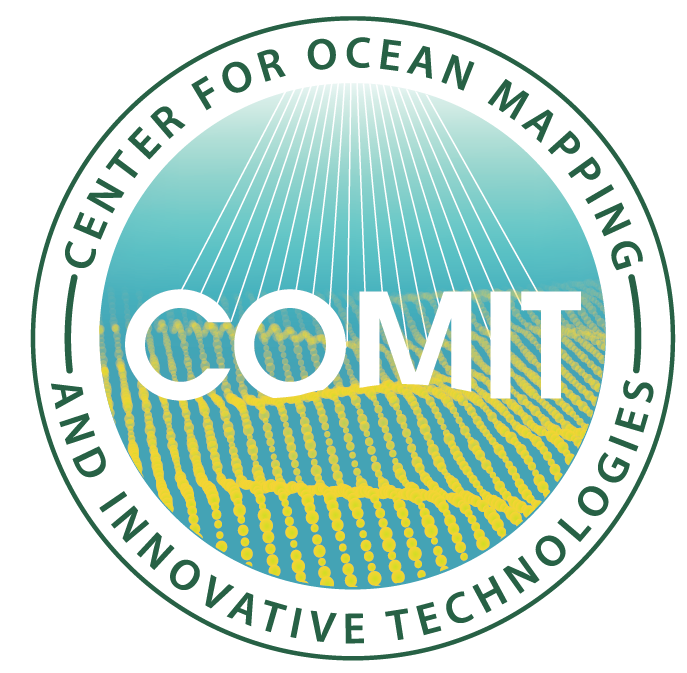
Recent Comments